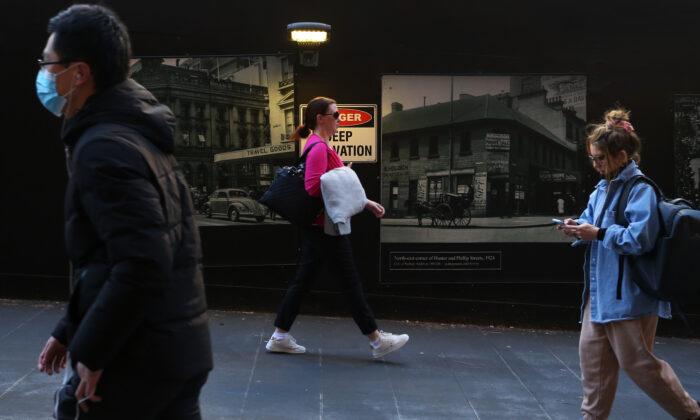Australia’s worse-than-expected inflation data in the March quarter could pose a challenge for the federal budget, according to analysts.
Despite this, Federal Treasurer Jim Chalmers still touted figures showing annual inflation has dropped under Labor.
However, Shadow Treasurer Angus Taylor claims Australians are paying a high price for the government’s “economic mismanagement.”
Deloitte Access Economics partner Stephen Smith said the treasurer would be treading a tightrope with price pressures lingering and growth subdued.
Chalmers Will Balance Inflation Flight with Economic Growth in Budget
Federal Treasurer Jim Chalmers acknowledged inflation is still too high and said the budget in May will focus on easing cost of living pressures, not adding to them.“The centrepiece of the cost‑of‑living help in the Budget will be a tax cut for every taxpayer. We will consider additional help on top of that if it’s affordable, if it’s responsible and if it helps takes some of the edge off inflation in our economy.”
Opposition Calls for Reduction in Spending in Budget
However, Mr. Taylor suggested the government needs to rein in spending in the federal budget, which could cause more pain.“There is a better way. A back to basics agenda that manages government spending, that makes sure there isn’t waste—$209 billion of extra spending since Labor came to power, over $20,000 for the average Australian household,” Mr. Taylor told reporters during a media doorstop.
“And the Treasurer is now out there telling us he’s going to spend more. He’s making very clear signals that that’s his intention in this budget, he’s going to spend more and that drives up inflation and interest rates. That puts more pain onto Australian households.”
The Shadow Treasurer suggested several measures he would like to see implemented, including reducing red tape and approving critical projects.
“As I say, there’s a better way, making sure that we’ve got the competitive, productive workplaces that we need, not handing over our workplaces to union officials,” Mr. Taylor said.
“Making sure we’re getting rid of the red tape, approving critical projects, making sure that Australians get the energy price reductions that they were promised the $275 and there’s absolutely no sign of that appearing.”
Meanwhile, ANZ senior economist Catherine Birch said inflation will need to slow in the second quarter of 2024 for Reserve Bank of Australia rate cuts.
What Did the ABS Data Reveal?
Data from the Australian Bureau of Statistics (ABS) showed that while CPI rose one percent in the March 2024 quarter, it increased just 3.6 percent annually.Education, health, housing, food, and non-alcoholic beverages were the greatest contributors to CPI increases in the March quarter.
For example, tertiary education costs soared 6.5 percent due to annual CPI indexation being applied to tertiary education fees.
Secondary education also soared 6.1 percent, while preschool and primary education lifted 4.3 percent at the start of the school year.
Medical and hospital services fees also hiked 2.3 percent amid GP’s and health service providers increasing consultation fees.
Rent costs also rose 2.1 percent, while new houses purchased by owner-occupiers increased by 1.1 percent.
“Rental prices rose 2.1 percent for the quarter in line with low vacancy rates across the capital cities. Rents continues to increase at their fastest rate in 15 years,” ABS head of prices statistics Michelle Marquardt said.
Non-alcoholic drinks also lifted 3.4 percent, fruit and vegetables rose 2.5 percent, and other food products lifted 1.9 percent. However, meat and seafood prices slid by 0.7 percent.
The ABS statistics head added, “Meat and seafood prices fell this quarter as increased supply and discounting led to price drops for beef and veal and lamb and goat. Discounting of Fish and other seafood, and other meats also contributed to the fall.”







